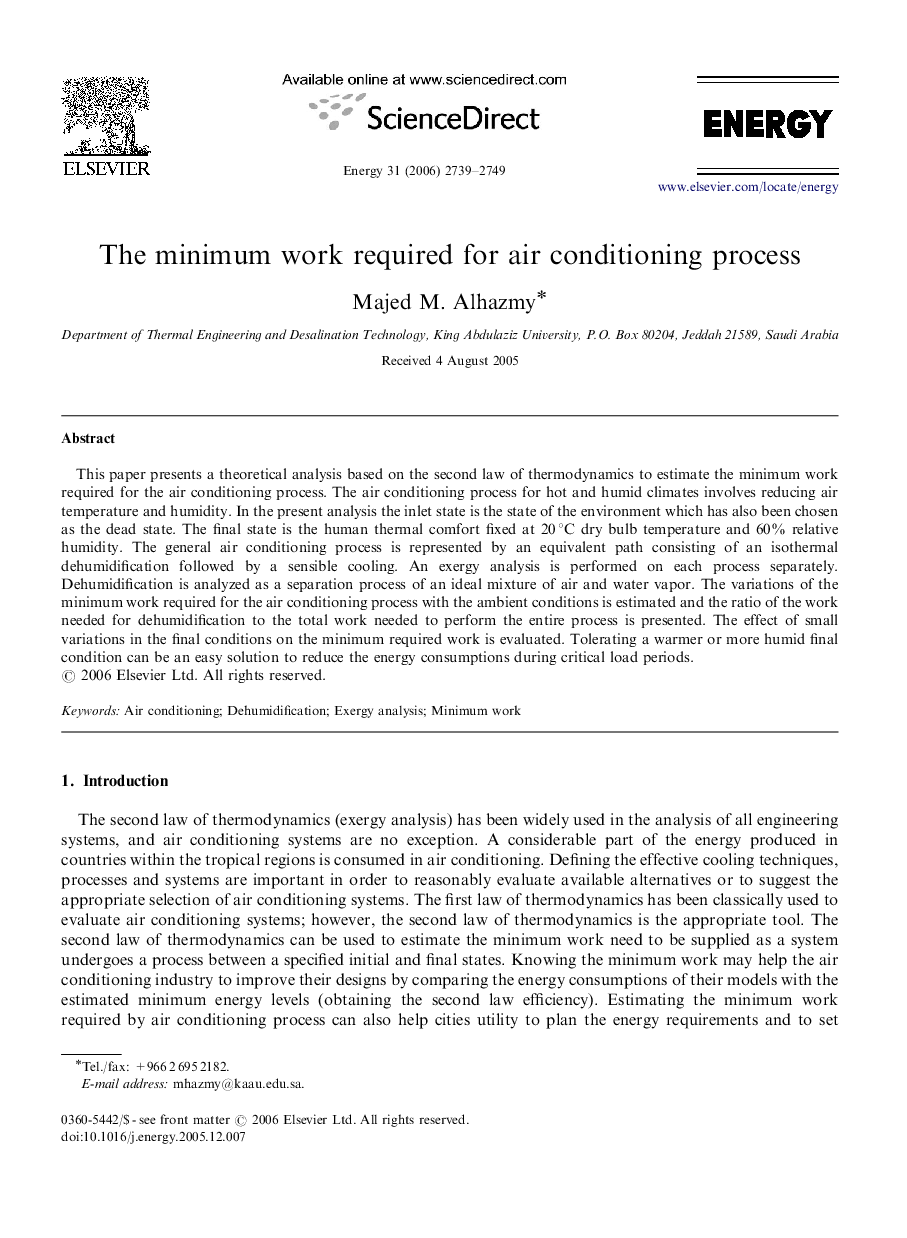| Article ID | Journal | Published Year | Pages | File Type |
|---|---|---|---|---|
| 1736315 | Energy | 2006 | 11 Pages |
This paper presents a theoretical analysis based on the second law of thermodynamics to estimate the minimum work required for the air conditioning process. The air conditioning process for hot and humid climates involves reducing air temperature and humidity. In the present analysis the inlet state is the state of the environment which has also been chosen as the dead state. The final state is the human thermal comfort fixed at 20 °C dry bulb temperature and 60% relative humidity. The general air conditioning process is represented by an equivalent path consisting of an isothermal dehumidification followed by a sensible cooling. An exergy analysis is performed on each process separately. Dehumidification is analyzed as a separation process of an ideal mixture of air and water vapor. The variations of the minimum work required for the air conditioning process with the ambient conditions is estimated and the ratio of the work needed for dehumidification to the total work needed to perform the entire process is presented. The effect of small variations in the final conditions on the minimum required work is evaluated. Tolerating a warmer or more humid final condition can be an easy solution to reduce the energy consumptions during critical load periods.
